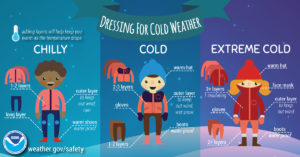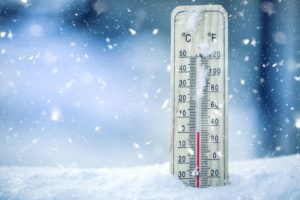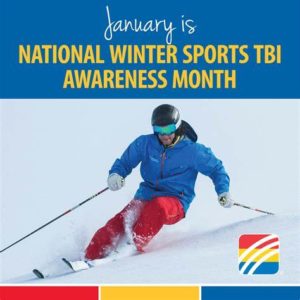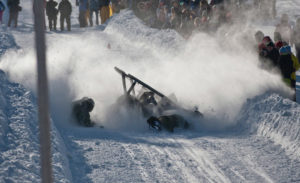


We all know in many states this winter so far has been nothing but for some areas in the U.S., just take Boston, but know winter isn’t over and February hasn’t even hit yet! The CDC recommends the following to stay safe and healthy in the winter:
“Winter storms and cold temperatures can be dangerous. Stay safe and healthy by planning ahead. Prepare your home and vehicles. Prepare for power outages and outdoor activity. Check on older adults.
Although winter comes as no surprise, many of us may not be ready for its arrival. If you are prepared for the hazards of winter, you are more likely to stay safe and healthy when temperatures start to fall.
Prepare Your Home
Staying inside is no guarantee of safety. Take these steps [PDF – 344 KB] to keep your home safe and warm during the winter months.
- Winterize your home.
- Install weather stripping, insulation, and storm windows.
- Insulate water lines that run along exterior walls.
- Clean out gutters and repair roof leaks.
- Check your heating systems.
- Have your heating system serviced professionally to make sure that it is clean, working properly, and ventilated to the outside.
- Inspect and clean fireplaces and chimneys.
- Have a safe alternate heating source and alternate fuels available.
- If you do not have working smoke detectors, install one inside each bedroom, outside each sleeping area, and on every level of the home, including the basement. Test batteries monthly and replace them twice a year.
- Prevent carbon monoxide (CO) poisoning emergencies.
- Install a battery-operated or battery backup CO detector to alert you of the presence of the deadly, odorless, colorless gas. Check or change the battery when you change your clocks in the fall and spring.
- Learn the symptoms of CO poisoning: headache, dizziness, weakness, upset stomach, vomiting, chest pain, and confusion.
Prepare Your Vehicle
Get your vehicle ready for cold weather use before winter arrives.
- Service the radiator and maintain antifreeze level.
- Check your tires’ tread or, if necessary, replace tires with all-weather or snow tires.
- Keep the gas tank full to avoid ice in the tank and fuel lines.
- Use a wintertime formula in your windshield washer.
- Prepare a winter emergency kit to keep in your car in case you become stranded. The kit should include:
- Cell phone, portable charger, and extra batteries.
- Items to stay warm, such as extra hats, coats, mittens, blankets, or sleeping bags.
- Food and water.
- Booster cables, flares, tire pump, and a bag of sand or cat litter (for traction).
- Compass and maps.
- Flashlight, battery-powered radio, and extra batteries.
- First-aid kit; and
- Plastic bags (for sanitation).
Prepare for Emergencies
Be prepared for weather-related emergencies, including power outages.
- Stock food that needs no cooking or refrigeration and water stored in clean containers.
- Ensure that your cell phone is fully charged.
- When planning travel, be aware of current and forecast weather conditions.
- Keep an up-to-date emergency kit, including:
- Battery-operated devices, such as a flashlight, a National Oceanic and Atmospheric Administration (NOAA) Weather Radio, and lamps.
- Extra batteries.
- First-aid kit and extra medicine.
- Baby items; and
- Cat litter or sand for icy walkways.
- Protect your family from carbon monoxide (CO).
- Keep grills, camp stoves, and generators out of the house, basement, and garage.
- Locate generators at least 20 feet from the house.
- Leave your home immediately if the CO detector sounds and call 911.
Take Precautions Outdoors
Outdoor activities can expose you to several safety hazards, but you can take these steps to prepare for them:
- Wear appropriate outdoor clothing: wear a tightly woven, preferably wind-resistant coat or jacket; inner layers of light, warm clothing; mittens; hats; scarves; and waterproof boots.
- Sprinkle cat litter or sand on icy patches.
- Learn safety precautions to follow when outdoors.
- Work slowly when doing outside chores.
- Take a buddy and an emergency kit when you are participating in outdoor recreation.
- Carry a cell phone.
Do This When You Plan to Travel
When planning travel, be aware of current and forecast weather conditions.
- Avoid non-essential travel when the National Weather Service has issued advisories.
- If you must travel, inform a friend or relative of your proposed route and expected time of arrival.
- Follow these safety rules if you become stranded in your vehicle.
- Make your vehicle visible to rescuers. Tie a brightly colored cloth to the antenna, raise the hood (if it is not snowing), and turn on the inside overhead lights (when your engine is running).
- Move anything you need from the trunk into the passenger area. Stay with your vehicle unless safety is no more than 100 yards away.
- Keep your body warm. Wrap your entire body, including your head, in extra clothing, blankets, or newspapers. Huddle with other people if you can.
- Stay awake and stay moving. You will be less vulnerable to cold-related health problems. As you sit, keep moving your arms and legs to improve circulation and stay warmer.
- Run the motor (and heater) for about 10 minutes per hour, opening one window slightly to let in air. Make sure that snow is not blocking the exhaust pipe—this will reduce the risk of carbon monoxide (CO) poisoning.
Be ready to check on family and neighbors who are especially at risk from cold weather hazards: young children, older adults, and the chronically ill.
If you have pets, bring them inside. If you cannot bring them inside, provide adequate, warm shelter and unfrozen water to drink.
No one can stop the onset of winter. However, if you follow these suggestions, you will be ready for it when it comes.”
So be safe this winter by being prepared!









